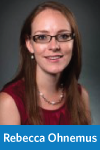by Rebecca S. Ohnemus, MAA, CRA, Research Officer at University of the Incarnate Word
PRIM&R is pleased to share a post by Rebecca Ohnemus, MAA, CRA, a member of the PRIM&R Blog Squad for the 2014 Advancing Ethical Research (AER) Conference. The PRIM&R Blog Squad is composed of PRIM&R members who will blog here, on Ampersand, about the conference to give our readers an inside peek of what happened December 4-7 in Baltimore, MD.
Following closely on the heels of World AIDS Day, “Issues Related to the HIV/AIDS Epidemic and the Populations Affected,” a panel at the 2014 AER Conference, was timely, relevant, and emotionally powerful. The panel featured policymakers and advocates alongside members of the research community, some of whom have worked for more than 30 years to develop treatments for HIV/AIDS.
This multi-disciplinary panel reflected an important component of HIV/AIDS research: collaborations between subject communities, advocates, and researchers. However, despite the collaborations that have bolstered HIV/AIDS research, all panelists agreed that there is still a long way to go.
The panelists suggested that the communities should be encouraged to play a larger role in order to help address underlying social and cultural structures issues. Panelist Darrell P. Wheeler, PhD, MPH, urged the research community to take up a “mantle of humanity” as we look at the circumstances of these lives, “there is a reality we don’t like to talk about which places people in these situations.”
Questions from the audience turned the conversation toward two challenges for IRBs:
Should IRBs consider subjects with HIV/AIDS to be a vulnerable population?
Though not specifically listed in the regulations as a vulnerable population, there is, as the panelists noted, room for interpretation. When considering whether or not someone would be more vulnerable to coercion or undue influence, or whether or not an individual is likely to be placed at a greater risk of social damage, Nancy E. Kass, ScD, suggested taking a look at the study as a whole.
“Consider study design, the subject population, the risks involved,” suggested Kass. IRBs must analyze and look at these elements both separately and as part of the whole. Ask the question: are people with HIV/AIDS more vulnerable? Sometimes they won’t be any more vulnerable than any other subject; other times they will be profoundly more vulnerable.
Do IRBs have a role to play in engaging vulnerable populations?
“This is serious déjà vu for me,” said Anthony S. Fauci, MD. He noted that while clinical trials had historically developed by scientists, in the early days of the epidemic, it made sense to include activists and community members when designing HIV/AIDS interventions. “Fast forward 20 years, and we wouldn’t dream of designing [an intervention] without involving communities,” commented Fauci.
“IRBs always have the opportunity to seek external expertise from the community or from experts,” said Kass. She suggests that IRBs and researchers build connections to relevant communities and utilize them as needed.
Wheeler commented: “We must look at the intersections between our disease research and the injustices of our world. If I’m not looking at the actual impact of a study on the population involved, I am not doing my job as an IRB member.”


No comments! Be the first commenter?